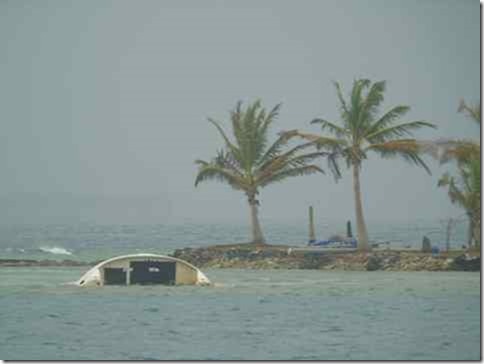The San Blas Islands and the Kuna Indians

Lovesail
Fri 6 Feb 2015 12:00
|
09:33.4N 078:56.9W
5 Feb 2015
We arrived in Porvenir on 27 January and spent the next 9 days cruising the
San Blas Islands. They comprise an archipelago of mostly small to very
small islets a few miles off the mainland coast and protected by a substantial
barrier reef, leaving the waters sheltered and offering a multitude of cruising
possibilities. The only drawback is the equal multitude of coral reefs
that surround the islands, presenting some pretty hazardous conditions for the
unwary. We were somewhat unnerved to notice three wrecked yachts on the
reefs on our initial approach to Porvenir. As we cruised the other inlands
it became obvious that these dangers are not confined to Porvenir, since there
were wrecks dotted around just about everywhere we went – some of them of very
recent origin. So we proceeded with due care and attention using every
available guide to help us negotiate safe passages around the islands.
The islands themselves are divided into those that are inhabited and others
which are not. The inhabited islands have little thatched huts densely
clustered together, while the uninhabited ones have been mostly planted with
coconut palms. There is sometimes a resident with his family on these
islands with the job of tending the coconuts but I reckon they make more money
these days by charging tourists to set foot on his island. The combination of
azure waters, white beaches, rich coral reefs and coconut trees make for picture
perfect tropical idyll.
The islands and the adjoining mainland coastal area constitute the Kuna
region of Panama. This has the distinction of being semi-autonomous and is
governed and populated very largely by the Kuna indians themselves in their
traditional manner. In fact we only met with people of pure indian blood
in the islands, with the possible exception of the immigration officers.
The people subsist on fishing, coconuts and handicrafts – besides baskets and
bead adornments, they make a unique garment called a mola which is a form of
applique worked in either traditional patterns or, these days, modern motifs for
the tourists. Their main form of transport is the dugout canoe, either by
paddle or sail and these are to be seen at all times crossing from one island to
another. A daily task is to fetch water from rivers on the mainland, since
the islands themselves have very limited supplies, if at all. This they do
in their canoes. Of course there are boats with outboards too, some of
which are used to ferry goods around as well as tourists from the
mainland. And speaking of tourists, we were amazed to discover just how
many yachts were present in the islands. For our first few anchorages
there were seldom less than 20 yachts around, although that began to thin out as
we travelled further away from Porvenir. And even cruise ships of various
sizes. Water taxis would transport groups of tourists from the ships to
one or two favoured picnic spots for the day. We went to one such barbecue
island, which was tiny, and were shocked to find over 100 pale skinned folk on
the beach who had arrived before us for a day trip. The San Blas have clearly
been “discovered” and yet it is amazing to find how little impact that this has
yet had on the local people. While they bring money into the economy,
there are the usual unfortunate side effects: dilution of the traditional
culture, garbage and pollution and pressure on the marine resources.
We had plenty of contact with the local people since their canoes would
visit us at anchor in order to trade their handicrafts or lobsters and crabs,
but few fish. They wouldn’t hesitate to tie up their canoe alongside and
then leap aboard with their goods, which they would then unpack and spread all
over the place. This would then be followed by an extended period of
banter in broken english/spanish. We also went ashore in a couple of the
inhabited islands where we were quickly adopted by a guide and conducted on a
little tour.
We were sad to leave the San Blas. The more we saw, the more we
realised that there was much more to discover if we had the time.
MB
     Some wrecks!
   |